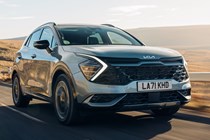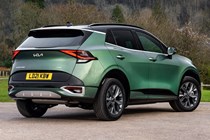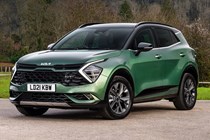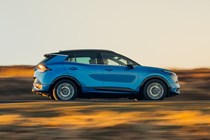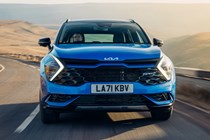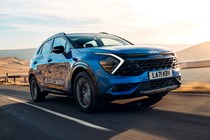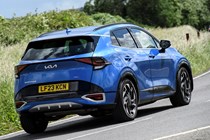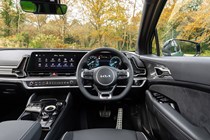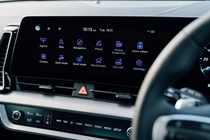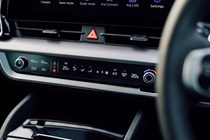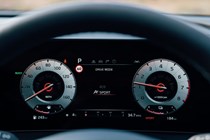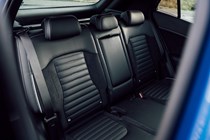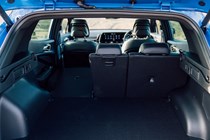Kia Sportage engines, drive and performance
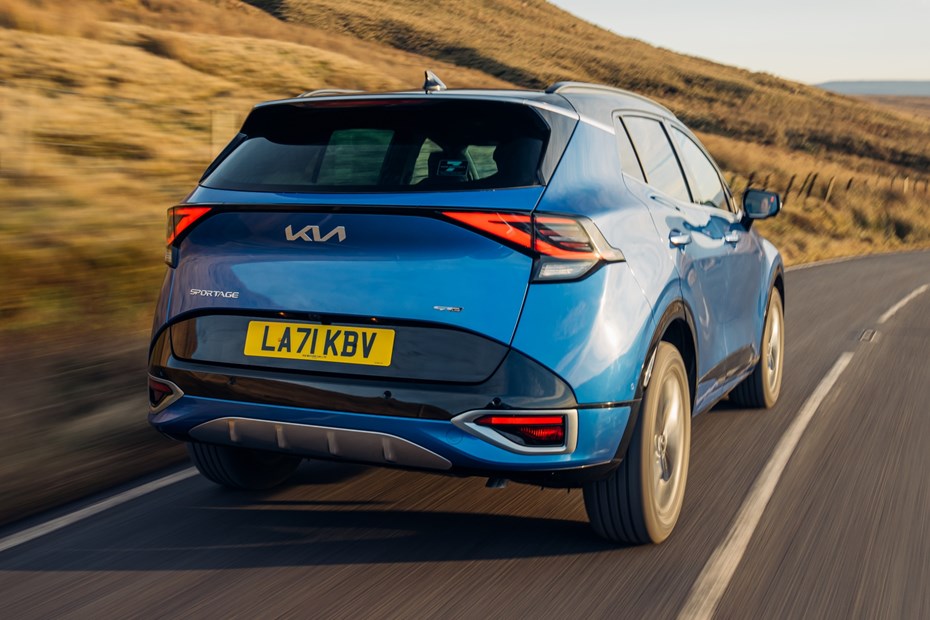
- Good choice of engines
- No punchy diesel
- Front or four-wheel drive
Petrol engines
The range kicks off with a regular 1.6-litre four-cylinder turbocharged petrol engine with a useful 150hp mated to a six-speed manual gearbox and front-wheel drive. Performance is fairly tepid at around 10 seconds for the 0-62mph run due to the Sportage’s size and weight, although there’s enough poke low down to make fairly relaxed progress.
This engine is also available with a mild-hybrid system that uses an electric motor to help the engine at low revs. A small battery also means it can shut its engine off for longer periods than the regular petrol. Only available with an automatic gearbox, you get the choice of front or four-wheel drive.
Out of this duo, we’d recommend the mild hybrid as it’s usefully punchier despite having the same power output on paper. It’s also more efficient for not a great deal of extra cash considering you also gain a desirable automatic gearbox.

Diesel engines
Although the Sportage gets a choice of two diesel engines, they’re not particularly powerful for the class. The entry-level 1.6-litre gets 115hp, on par with the basic Ateca and Karoq for power but not torque on account of those car’s larger 2.0-litre engines. That helps explain why the base diesel Sportage takes nearly 12 seconds to go from 0-62mph.
The more powerful 136hp version of the 1.6 diesel gains mild hybrid tech to reduce emissions and improve economy despite the power boost. Even so, judging by the official performance figures it’s nowhere near as strong as 150hp versions of the Volkswagen Group 2.0-litre diesel, let alone punchier 200hp variants.
Hybrid engine
The full hybrid Sportage HEV has a more powerful version of the 1.6-litre engine combined with a larger battery and electric motor. That means it can run for short distances on electric power alone while peak power jumps to 229hp with both engine and electricity working together. It takes around eight seconds to get from 0-62mph, making it noticeably swifter on the road than the mild hybrids. Even so, that’s not particularly strong compared to the wider class, with mid-range petrol Atecas and Karoqs proving similarly brisk.
Plug-in hybrid engine
The plug-in hybrid version combines the 1.6-litre T-GDi engine with a 70kW electric motor powered by a 13.8kWh battery pack. The high-voltage battery sits centrally between the two axles under the body of the SUV, ensuring a balanced weight distribution and an interior space that is practical, comfortable and versatile. This results in a maximum power output of 265hp – and a 0-62mph time of 7.9 seconds and maximum speed of 119mph.
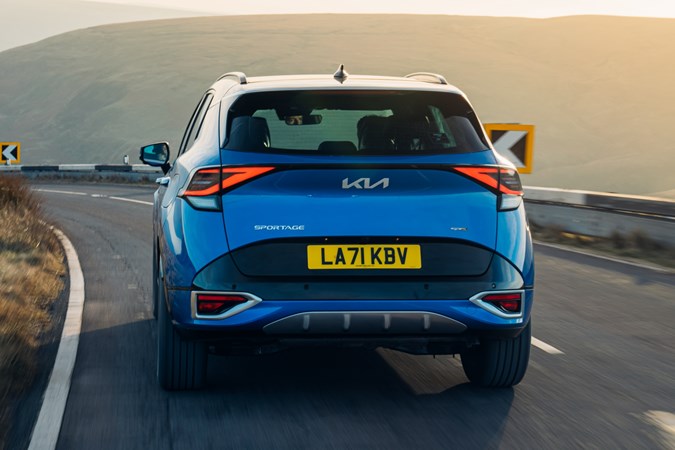
What’s it like to drive?
- Focus on comfort
- Rivals are more fun to drive
- Performance adequate, but nothing more
Comfy and refined, rather than anything particular sporting. If you do want a family SUV with a bit of vim to its handling, check out the Seat Ateca or Ford Kuga, but if you just want something that’s serene, relaxed and secure, the Kia Sportage is spot on. There are only two drive modes – Sport and Eco – but even in Sport the steering is very light and a little inconsistent. It’s great for wheeling around roundabouts and tight town roads, but could be more confidence-inspiring in faster bends.
It’s certainly fast enough in the full hybrid ‘Sportage HEV’ guise, and while the six-speed automatic gearbox shifts quite slowly, it’s also smooth and does what you expect it to.
Ride comfort is mostly good, especially at town speeds when it soaks up patchwork surfaces well. At higher speeds you get a heavy thump and shudder through the cabin over bigger potholes or sunken drain covers, but generally the spongey, long-legged gait will keep everyone on board happy. The Sportage does roll quite noticeably in corners, but nothing too dramatic and there’s plenty of grip.
Its impressively quiet even on the motorway, with wind, tyre and even engine noise just a calm, distant thrum. As long as you avoid accelerating very aggressively, which has the coarse-sounding petrol engine revving too hard in the hybrid and PHEV models, the Sportage is impressively hushed. The PHEV powertrain is also programmed to run on electric power as often as it can, which further reduces noise in the cabin.
Ultimately, this just isn’t a car that encourages or feels very at home in fast driving, and that’s absolutely fine because the Sportage is one of the more comfortable and refined options in the class, which is sure to be of more value to most buyers.


